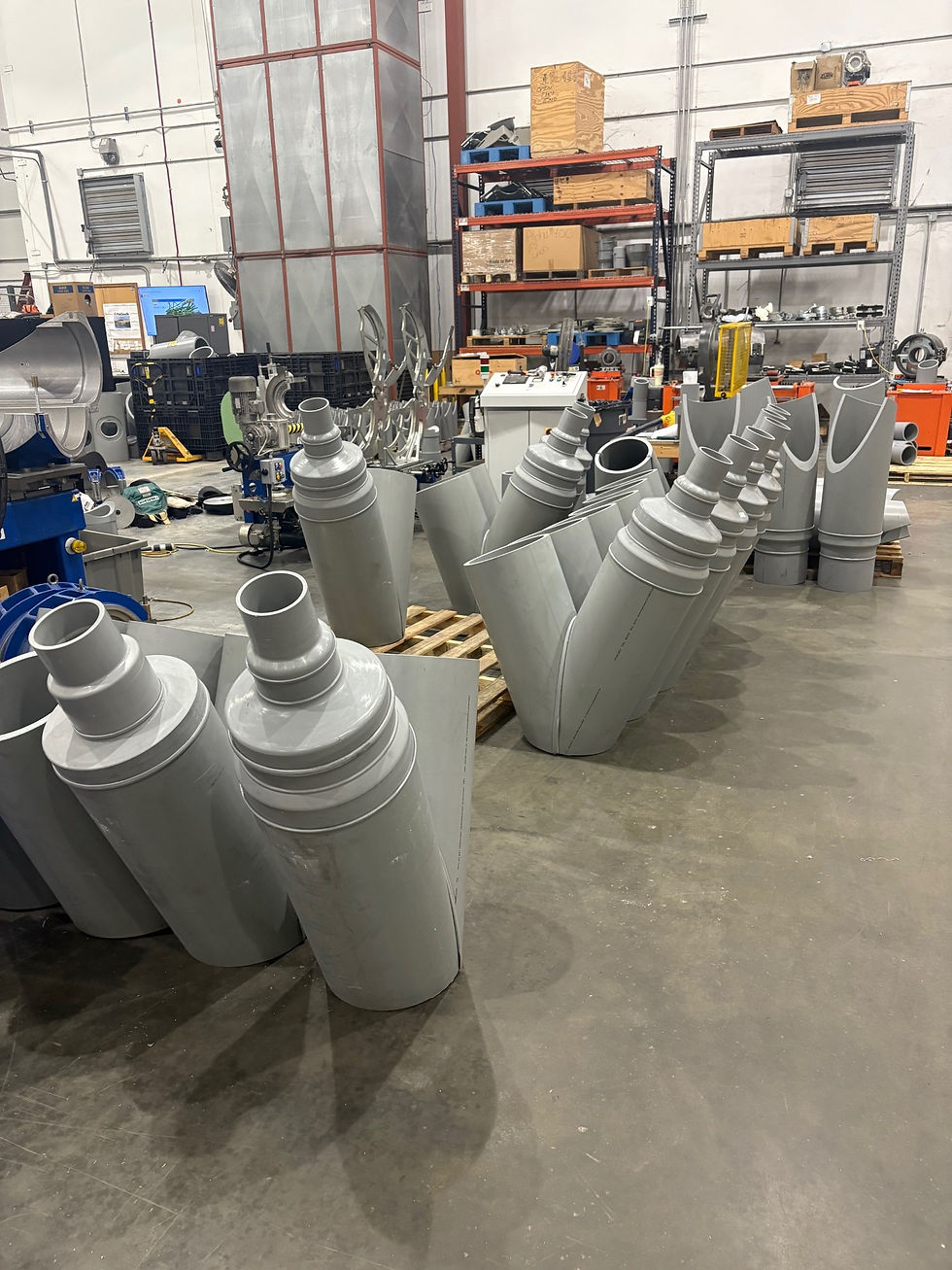The Superior Choice: PP-RCT Piping vs. Steel Piping
- Abby Ziu
- Jun 14, 2024
- 2 min read
When it comes to selecting the ideal piping system for various applications, the choice between PP-RCT (Polypropylene Random Copolymer with Modified Crystallinity and Temperature Resistance) piping and traditional steel piping is a crucial decision. While steel piping has been a longstanding choice in construction and industrial settings, the benefits of PP-RCT piping are becoming increasingly evident. Let's explore why PP-RCT piping emerges as the superior option over steel piping in today's demanding environments.
Lightweight and Easy Installation
One of the primary advantages of PP-RCT piping is its lightweight nature compared to steel piping. This characteristic simplifies transportation and handling during installation, reducing labor costs and making the process more efficient. Additionally, the flexibility of PP-RCT piping allows for easy bending and fitting, enabling quick and hassle-free installations in various settings.
Corrosion Resistance and Durability
Unlike steel piping, which is susceptible to corrosion over time, PP-RCT piping offers excellent resistance to chemicals and aggressive substances commonly found in industrial environments. This corrosion-resistant property enhances the longevity of the piping system, reducing the need for frequent maintenance and replacements. As a result, PP-RCT piping proves to be a durable and cost-effective solution in the long run.

Energy Efficiency and Thermal Insulation
PP-RCT piping exhibits superior thermal insulation properties compared to steel piping. This feature minimizes heat loss and maintains consistent temperature levels within the piping system, promoting energy efficiency in heating and cooling applications. By reducing energy consumption and heat transfer losses, PP-RCT piping contributes to sustainable operations and cost savings for businesses.
Noise Reduction and Environmental Sustainability
The inherent properties of PP-RCT piping provide excellent sound insulation, reducing noise levels generated by fluid flow within the pipes. This feature is particularly beneficial in residential and commercial buildings where noise pollution is a concern. Furthermore, PP-RCT piping is recyclable and environmentally friendly, aligning with modern sustainability practices and regulations.
Versatility and Adaptability
PP-RCT piping offers versatility in its applications, catering to a wide range of industries including HVAC, plumbing, and chemical processing. Its adaptability to varying temperatures and pressures makes it an ideal choice for diverse operational requirements. Whether used in residential construction or industrial facilities, PP-RCT piping demonstrates flexibility and reliability in different settings.
Conclusion
In the debate between PP-RCT piping and steel piping, the advantages of PP-RCT piping clearly stand out as a superior choice for modern construction and industrial projects. With its lightweight construction, corrosion resistance, energy efficiency, and environmental sustainability, PP-RCT piping embodies the next generation of piping systems. By embracing PP-RCT technology, businesses can enhance operational efficiency, reduce maintenance costs, and contribute to a greener future.
When considering your next piping solution, remember that PP-RCT piping offers a compelling array of benefits that set it apart from traditional steel piping. Make the smart choice for your projects and experience the advantages of PP-RCT piping firsthand.
In a landscape where efficiency and performance are paramount, the benefits of PP-RCT piping shine bright as a modern alternative to steel piping. Its lightweight design, corrosion resistance, energy efficiency, and versatility make it a standout choice for diverse applications. Embrace the future of piping technology with PP-RCT and elevate your projects to new heights of excellence.







Comments